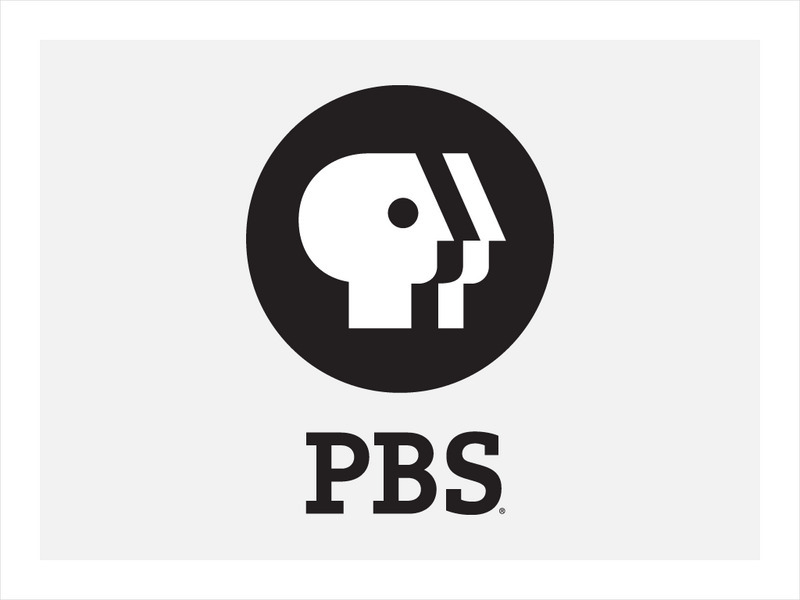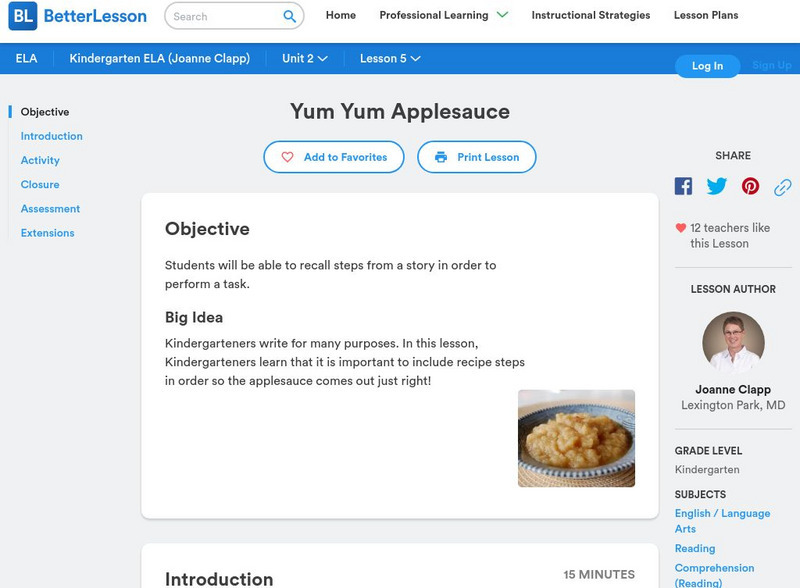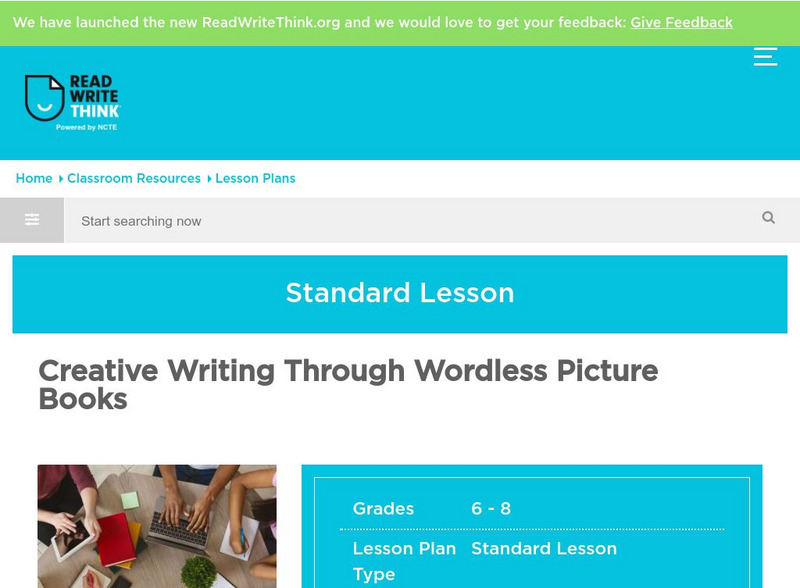Hi, what do you want to do?
Curated OER
History Close to Home
Young scholars examine primary sources as related to Nevada and the Civil War. In this United States history instructional activity, students gather and analyze various primary sources in small groups and interpret unknown vocabulary...
Curated OER
Quest for Gold
Students identify people involved in the Olympics in the past and explain how their ideas and actions have changed others' lives. they take notes during research and present the information in written or picture format.
Curated OER
Merry Easter
Fourth graders create greeting cards to special persons for a special holiday.
Curated OER
Why Walk?
First graders listen to the book Yummers. They use the food pyramid to evaluate what Emily Pig ate during her walk and find out why her walk made her sick. They participate in a walking game.
Curated OER
Excavating Your Recycling Bin as a Fossil Record
Students explore how scientists examine the past and use rock layers with fossils to understand the past. In this excavation lesson students divide into groups and complete an activity.
Curated OER
Historical Fiction - Based on facts or purely fiction?
Students, after reading an Accelerated Reader historical fiction book, research the actual historical time period portrayed in the book. Then, working in a cooperative learning group, they create a HyperStudio presentation.
Curated OER
Persuade Me
Seventh graders give persuasive presentations based on the questions they have researched. They examine appropriate delivery techniques for effective persuasive presentations. (Note: This lesson should be taught, after students have...
Curated OER
Three-Hole Bottle
Young scholars participate in an experiment with a 2-liter bottle. They develop their own hypothesis about what they believe will happen when certain items are tested on the bottle. They discuss results.
ReadWriteThink
Read Write Think: Sequence of Events Chart
A printable graphic organizer to help students sequence events and recognize cause and effect relationships within a story. Directions on how to use this graphic organizer as well as lists of teaching ideas and related resources are also...
Daily Teaching Tools
Daily Teaching Tools: Flow Charts for Sequencing
This Daily Teaching Tools resource provides a graphic organizer. Students will be able to write a sequence of events more efficiently by using this tool.
ReadWriteThink
Read Write Think: Sequencing a Strategy to Succeed at Reading Comprehension
Contains plans for lessons that use the story of Paul Bunyan to teach about sequencing and order of events. In addition to objectives and standards, this instructional plan contains links to sites used in the lessons as well as...
Beacon Learning Center
Beacon Learning Center: Sequence of Events
Build sequencing skills by looking at transition words like first, next, then, and finally. Read four short paragraphs and use the transition clues to put the events in the correct order. Then use these words while typing an original...
SMART Technologies
Smart: Reviewing Sequence of Events
Students will identify time-order words in order to comprehend passages, place events in sequential order on a time line, and use a flow chart to organize their thoughts for writing in this interactive SMART whiteboard activity.
ReadWriteThink
Read Write Think: Buddies Create Power Point Stories
Contains plans for five lessons that ask learners to create PowerPoint presentations about shared experiences like field trips or other activities. Students take pictures of what happen, and then explain the sequence of events in words...
ReadWriteThink
Read Write Think: Exploring Before, During, After Sequencing
From Read-Write-Think, here is a three-day lesson plan in which a class collaborates to produce a book, focusing on carving a jack-o-lantern. The emphasis is on teaching the skill of sequencing events.
Houghton Mifflin Harcourt
Harcourt: School Publishers: Test Tutor: Sequence
Students will increase their reading comprehension skills and understanding of story sequence by reading a passage of text and then answering questions about the order of events.
Better Lesson
Better Lesson: Tie It Up With Transition Words to Write a Story!
Read, write, and present a digital narrative with transition words to help us put the events in order! After modeling the lesson, groups of students will write narratives to recount a short sequence of events, they will include details...
ReadWriteThink
Read Write Think: Draw a Story: Stepping From Pictures to Writing
Help young students move from drawing pictures into writing simple stories. Good plan for having students put pictures in sequential order and teaching them about sequential order.
Houghton Mifflin Harcourt
Holt, Rinehart and Winston: Writing a Personal Narrative [Pdf]
A middle school student model of personal narrative writing. Includes a good writing style, examples, and very good notes and annotations as helpful aids for writing success. Points out the introduction, sequence of events and how they...
PBS
Pbs Teachers: Story Writing With Arthur
This series of 12 downloadable activities teach students some basics of story writing, using books or videos from the PBS "Arthur" series as a springboard. Activities include creating story maps, asking questions about characters and...
Better Lesson
Better Lesson: Yum Yum Applesauce
Kindergarteners write for many purposes. In this lesson, kindergarteners learn that it is important to include recipe steps so the applesauce comes out just right!
SMART Technologies
Smart: Sequence Putting Things in Order
Students will practice putting things in order, learn about sequence words, and use sequence words to produce a writing assignment within this interactive SMART whiteboard lesson.
ReadWriteThink
Read Write Think: Creative Writing Through Wordless Picture Books
Need help planning ways to creatively teach your students chronological order? Here's a great place to start. While the site is specifically geared toward the middle school student, it is a teaching idea which could easily be adapted for...
Other
Write Design: Graphic Organizers: Sequence
Lists and describes several types of graphic organizers which fall under the "sequence" mold, including a ranking table, continuum scale, cycle, bridging snapshots, series of events chain, and a problem/solution outline.















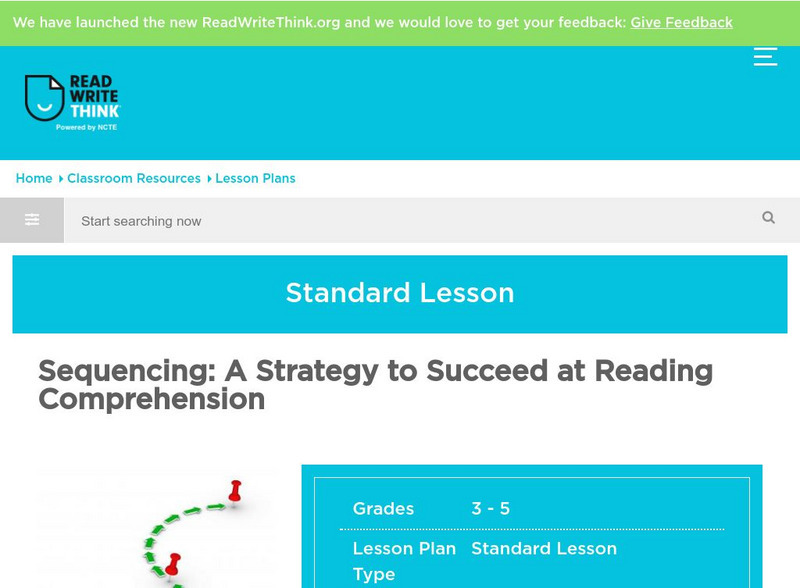
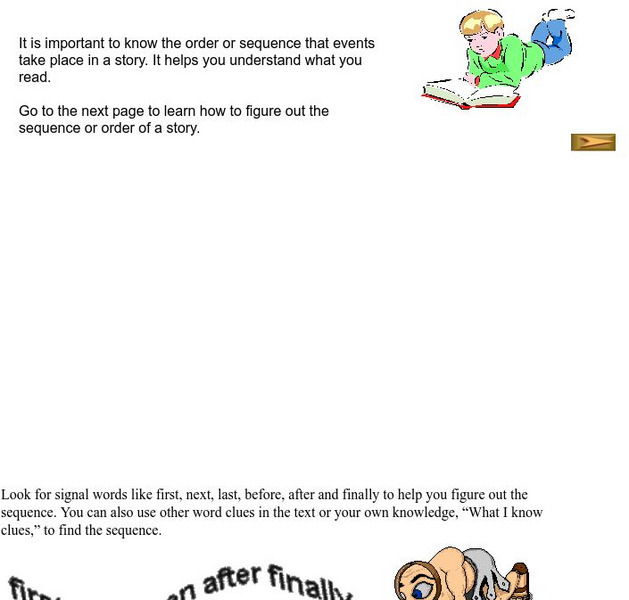






![Holt, Rinehart and Winston: Writing a Personal Narrative [Pdf] Unknown Type Holt, Rinehart and Winston: Writing a Personal Narrative [Pdf] Unknown Type](http://lessonplanet.com/content/resources/thumbnails/410070/large/bwluav9tywdpy2symdiwmduymc0xmtq2ny01njrxbhiuanbn.jpg?1589985236)
